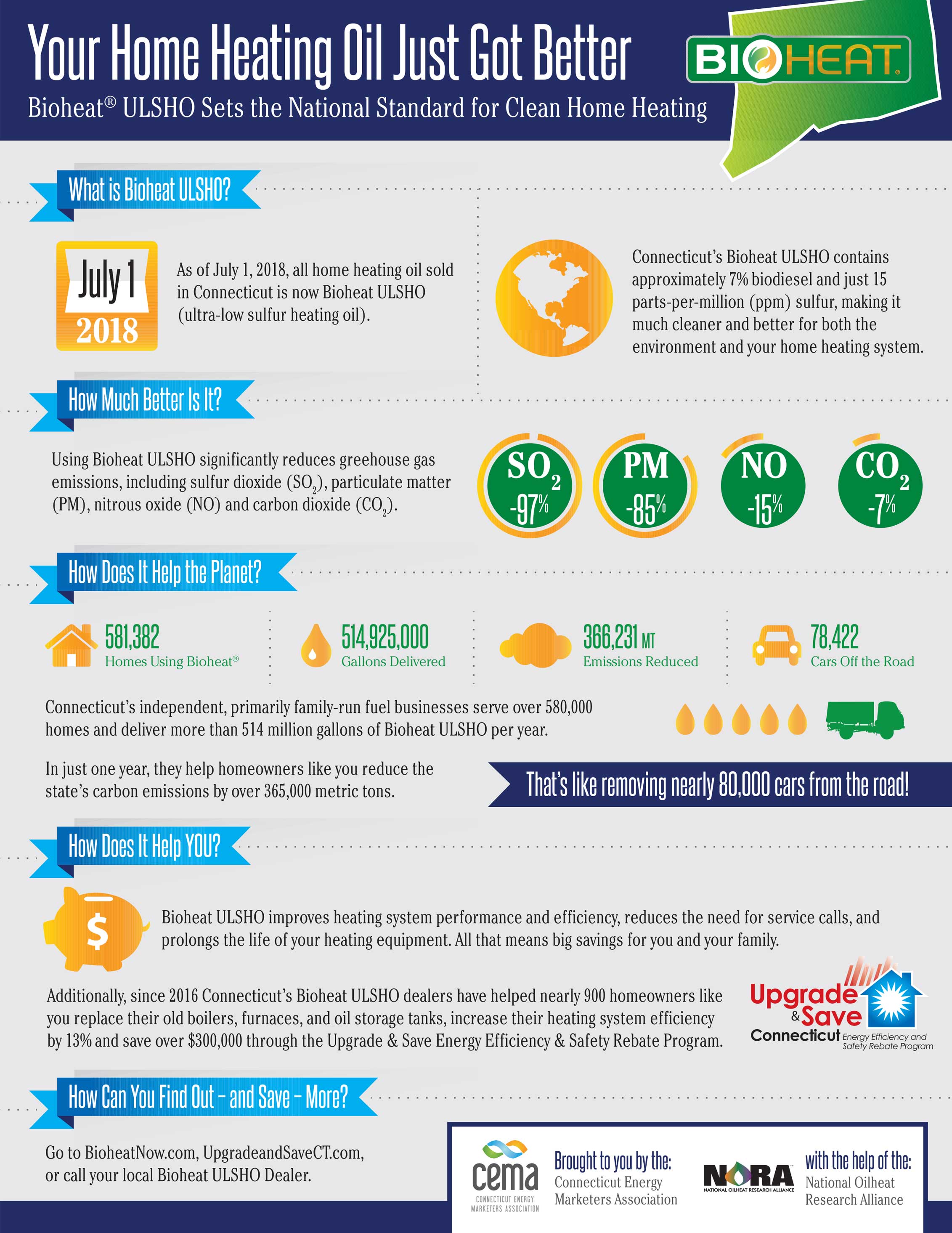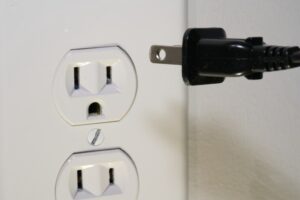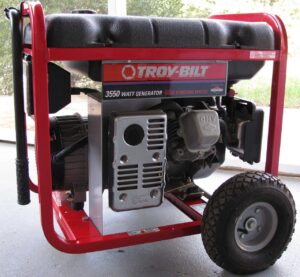 As the cold weather approaches, you might be thinking about the most cost-effective and efficient way to heat your home. It’s wise to consider a variety of fuel alternatives, as well as different ways to optimize your home for energy efficiency.
As the cold weather approaches, you might be thinking about the most cost-effective and efficient way to heat your home. It’s wise to consider a variety of fuel alternatives, as well as different ways to optimize your home for energy efficiency.
After all, heating systems aren’t only about your comfort, they also account for nearly 42% of your entire energy bill.
Whether your home is already equipped with an oil-fueled furnace, or you’re upgrading your home’s heating system this season, you’ll want to know about the source that is fueling your home’s heat. These 16 facts will tell you everything you need to know about home heating oil so you can make the right decision for your home.
Given how clean, safe, and efficient home heating oil is, it is no wonder why so many households in New Haven and Fairfield counties use it to heat their homes. Before winter hits, contact your HVAC company to ensure your heating system is running properly, your fuel is filled, and your home is optimized for efficiency.
Do you want to know more about home heating? Check out these helpful resources:

(Photo/Pexels)
The two factors that will have the biggest impact on your heating oil use is the size of your home, and how long you leave your furnace running.
To start, the size of your home will have an impact on the number of gallons required to keep your house warm. The most common sizes of heating oil tanks are:
As a general rule of thumb, most homeowners use tanks 300 gallons or less for one and two-bedroom homes. Larger three and four-bedroom homes require tanks closer to 500 gallons.
On average, an oil-burning furnace will burn between 0.8 and 1.7 gallons per hour while in operation. So, if you have a one-bedroom home, requiring a 300-gallon tank, and you keep your furnace running for 10 hours, you’ll need to fill your rank after 17 days.
1.7 gallon per hour *10 hours a day = 17 gallons a day. 300-gallon tank / 17 gallons = 17.64 days
Of course, the equation above is only a ballpark figure. How much heating oil you use will also vary based on the factors below.
It may also be time to consider replacing your furnace or any of its parts that are aging. Oil burners, furnaces, and nozzles that are approaching or are more than 20 years old may add 15-25% on your heating oil bill.
To get the best assessment of how much heating oil you will use throughout the year, gather your bills for as many months back as you can.
Compare your monthly spend to the average cost per gallon of heating oil (roughly $3.00) to see how many gallons you used.
You can also consult with a heating oil expert to get their take on your heating oil consumption and help determine the best way to keep your heating oil filled automatically.
Heating oil will generally last between 18 and 24 months inside a tank, as long as you take care of your tank and use high-quality oil. If you have a partially full tank left when you turn off the heat for the spring and summer months, your oil should still be in good condition once you turn the heat back on in the fall.
You may be surprised to learn that there are many factors that can impact delivery reliability and the price of your fuel.
September and April are great months to order oil. Both are downtimes for heating oil delivery and allows you to fill up your tank without competing with the demand that pours in closer to the winter season.
According to the U.S. Energy Information Administration, the average cost for heating oil in 2019 was just over $3.00 per gallon. However, each month marked subtle changes to the price a consumer will pay. For example, in February, the cost was $3.20, and in October, it was only $2.90. By paying attention to the ebbs and flow of oil prices, you can cost-effectively fill your tank.
Companies like Santa Energy also provide price protection plans to help homeowners avoid the costly volatility of the heating oil market.
Keeping up with heating oil can be difficult. Remove the worry and hassle of monitoring your fuel levels by working with a heating oil company that does the heavy lifting for you.
Santa Energy offers tracking technology that calculates precisely when your home will need a heating oil refill and ensures delivery before you run out.
 If you’re looking for an energy-efficient and clean fuel source to run your home’s HVAC system, consider Bioheat, one of the newest fueling options available on today’s market.
If you’re looking for an energy-efficient and clean fuel source to run your home’s HVAC system, consider Bioheat, one of the newest fueling options available on today’s market.
Bioheat heating is an alternative option to traditional home heating oil. It’s made by mixing oil with Biodiesel, which is a renewable energy source created from fatty acids found in natural sources.
Bioheat is made from:
Biodiesel is domestically manufactured in approximately 150 production plants capable of producing 2.5 billion gallons of Biodiesel each year.
The types of Bioheat on the market are named by the blend. For example:
The lower the amount of heating oil, the more efficient the fuel.
The most notable difference about Bioheat is that, unlike when switching fuel sources like from propane to natural gas, which can be insanely expensive, you don’t have to make any updates to your furnace, boiler or tank to begin using the fuel.
The other impressive difference in Bioheat is its cleanliness. Because of its renewable component, of Biodiesel, it lowers emissions of:
Because the market for Bioheat is young, the price is volatile. The price will also change depending on the blend you select. However, the cost is comparable to that of conventional heating oil. It also burns more efficiently, which lowers the overall price per gallon even more.
Because there are environmental and economic benefits to promoting Bioheat, there is a growing interest in distributing Bioheat and producing Biodiesel more broadly, which will have an impact on the cost of this fuel in the years to come.

Proper placement of your generator is more than just throwing your equipment down in your yard and calling it good. Many factors can affect your safety, health, and wellbeing.
To start, the strategic placement of your generator requires close attention to regulations and requirements from:
There are also considerations to ensure you’re not inhaling the dangerous fumes generators put off.
Below we navigate the most important considerations when placing your generator and where to turn to for help if you’re unsure how to place your generator correctly.
NFPA 37 is a highly detailed mandate for the installation of generators at your home. View the document below to understand the full scope of distant requirements:
The gas and electric company in your area will have specific clearance requirements for standby generators. For example, in particular counties of Connecticut, new installations must adhere to the following rules:
Every city and county will have different building codes and inspection requirements for the placement of your generator. But, across the board, you can expect to see governance on nuances like if your generator needs to sit on a concrete pad or not.
Even with extensive research on local codes in your area, finding reliable information can be a trick. To ensure you’re compliant, work with a professional who knows how to work with local building departments, and understands local building codes.
In addition to local or federal ordinances, there are standard regulations homeowners should follow. For example, most manufacturers will state that your generator should always be located outside and placed at least five feet from doors, windows, and vents, and flammable material.
If the distance requirements differ between your manufacturer and local guidelines, go with the greater measurement as a safety precaution.
Beyond mandated considerations, the strategic placement of your generator can help reduce installation costs, optimize your generator’s efficiency, and protect your health.
Odds are, you will need a professional to come in and create a power source for your standby generator. The location you select for your generator may have an impact on your overall installation costs.
If you can, install your generator near your gas meter so that you don’t need as much piping to fuel your generator. Not only will this improve the consistency of the fuel supply to your generator, but it will also reduce the material and labor required to install your generator.
Protecting your generator from the elements is one way to extend its lifetime, but will also play a role in how well you standby generator functions. For example, if you’re trying to use your generator in the thick of a snowstorm, but snowdrifts obstruct your generator, you may experience low performance. Other obstructions, like vegetation in your yard, can also impact the performance of your generator.
Finally, mind the fumes. If you live in a particularly windy area, strong gusts of wind can bring exhaust and fumes into our home. Protect your air quality by positioning your generator in a location that blows away from your home. Remember, generator exhaust contains carbon monoxide. So, placing your generator in an area that makes you vulnerable to its fumes can be more than a nuisance, it can be a health issue.
On the same note, it’s also important not to place your generator under casing like an awning, which can trap exhaust and create a buildup of fumes and exhaust.
Standby generators are typically noisy. By placing one near your bedroom, living room, or your neighbor’s house could become bothersome to your family and neighbors. Try placing your generator in an isolated location to reduce noise pollution.
After you’ve selected the best location for your generator, you’ll need to determine if you need construction and grounding to secure the machine.
In most cases, small, air-cooled generators will come with the necessary attachments to quickly and easily place your generator as a DIY project.
For larger, liquid-cooled machines, you’ll need to pour a concrete pad. If you know how to pour concrete, you can do this on your own. If not, it’s best to call in the pros to ensure you get the job done correctly the first time.
Here is a great video to watch if you need help preparing the foundation for your standby generator.
Proper planning for the location of your generator helps you stay compliant with federal, state and local ordinances.
But, most importantly, it helps you keep your home and your family safe and comfortable. Because there are a number of hazards associated with a generator, double and triple check the placement of your generator, so you have a firm grasp on safety.
 Most furnaces and boilers have a lifespan of around 15-20 years, though homeowners who have performed annual maintenance may enjoy longevity with their system. However, if your heating system is reaching its expiration date, it’s important to start looking for telltale signs your system needs a replacement.
Most furnaces and boilers have a lifespan of around 15-20 years, though homeowners who have performed annual maintenance may enjoy longevity with their system. However, if your heating system is reaching its expiration date, it’s important to start looking for telltale signs your system needs a replacement.
Don’t get caught with a faulty heating system as winter begins.
The most common red flags homeowners should look for as their heating equipment ages are:
Each of these factors can mean that your system isn’t working as efficiently—or cleanly—as possible. Maybe an obvious indicator, but if you’ve had to call up the repair team more often than usual, it may be another sign that it’s time to replace your heating system.
If you start to notice the signs of aging or inefficiencies in your system, it’s time to ask if a replacement or continued repairs is the best option. It’s a hard decision to make as the upfront cost of a new heating system can be expensive. But, so are continued repairs and maintenance on your system.
If your heating system is less than 10 years old, it’s likely not ready to be replaced quite yet. Of course, every situation is unique. Work with an HVAC company to learn the extent of damage to your system so you can accurately assess if it’s best to replace or repair.
On the flip side, if your machine is older than 15 years, don’t jump the gun when it comes to replacing your system. Instead, thoroughly examine the operation of your existing equipment:
Look for other, potentially dangerous signs like:
These signs could indicate your burner is not working correctly and could indicate your system is producing carbon monoxide. Though carbon monoxide is nothing to fool around with, the problem can be fixed through a repair, not necessarily an entire system replacement.
Important note: What type of refrigerant does your heating system use? In January 2020, systems that require R22 refrigerant will need updates. If your system uses R22, you’ll need to retrofit your existing equipment to work with newer refrigerants, or you’ll need to purchase a new system.
If your system is beyond repair— or needs an update to stay compliant with the R22 update— there is a silver lining. A new heating system will provide you:
When you make the big decision, consider the following factors:
How you fuel your new heating system will be one of the most important choices you make. Though there are plenty of furnace and boilers that run off natural gas. However, if your home isn’t already equipped with a natural gas line, be prepared to spend money on costs like:
These costs can rise to more than $10,000 for homeowners who need a complete conversion.
For homes that don’t have natural gas pipes, heating oil and propane are particularly common sources for fueling furnaces and boilers, especially for homes in the northeast.
While both options work well, homeowners may spend a bit more on the upfront investment for a boiler.
Homeowners also complain that furnaces are more susceptible to breakdowns. To prevent untimely repairs, homeowners must keep a more careful eye on routine maintenance and regular cleanings. In many cases, homeowners say that apart from an annual inspection, boilers require much less attention.
The cost of your new heating equipment will vary based on the type of equipment you select.
For example, the cost to purchase an install a boiler can be 2-3 times more expensive than the cost of a furnace. The average costs are as follows:
Installing a new furnace will cost somewhere between $1,200-5,000 depending on the fuel it runs on. A boiler, on the other hand, can cost between $5,000 and over $8,000 depending on the fuel it runs on.
A faulty heating system can turn a cold winter day into a dangerous emergency. Especially if you don’t have a backup generator on hand.
Before winter hits, it’s wise to call in an expert for an annual inspection and home energy audit.
If you think it’s time to replace, your technician can also assist you with the process. From determining the proper fuel to selecting the best equipment for your home, work with an expert to ensure your house isn’t left without heat this winter.
Functionally, the most significant difference between a furnace and a boiler is that a furnace uses air to transfer heat, and a boiler uses water. However, this seemingly innocuous difference affects everything from upfront costs, efficiency and air quality, to ongoing maintenance bills.
Read on to see the benefits and drawbacks of furnaces and boilers, and which is best for your home.

(Photo/Wikimedia Commons)
A furnace can be powered by electricity, natural gas, propane, or heating oil. This system warms your home by drawing in cool air and then transferring it to the furnace through ducts. Once the air has reached the furnace, it is filtered, heated, and pushed back into rooms of your home through the same ductwork.

(Photo/Wikimedia Commons)
Rather than using air to warm your home—as a furnace does—boilers utilize hot water, making them essentially a special-purpose water heater.
A boiler uses gas, propane, natural gas, electricity or oil, to warm the water in its tank and then pushes the water through a venting system to warm your home. Once the water has cooled down, it is sent back into the boiler to be reheated and recirculated through your home.
The differences in how the heat is created and distributed throughout your home mean that boilers and furnaces have unique weaknesses and strengths.
Finally, because the vents of furnaces are exposed, they pose more safety risks than boilers. Objects can slip into the vents of a furnace, which is a fire risk. It’s also possible for someone’s finger or hands to reach into the vent, which poses a risk of burns.
While weighing the pros and cons of furnaces and boilers, maybe you noticed boilers have a few more advantages than furnaces. The benefits of a boiler are reflected in the price difference: Furnaces are significantly less expensive than boilers.
The cost of a boiler—and the subsequent installation—are anywhere from 2-3 times more expensive than the standard rates for installing and purchasing a furnace.
Installing a new furnace will cost somewhere between $1,200-5,000 depending on the fuel it runs on. A boiler, on the other hand, can cost between $5,000 and over $8,000 depending on the fuel it runs on.
Homeowners also find savings with furnaces when they are installed with a Central Air system. By combining the two systems, homeowners don’t have to pay for extra ductwork.
When it comes to efficiency, boilers may save you a bit on your monthly energy bills if your furnace is an older model. However, with newer models, both furnaces and boilers are roughly 95% energy efficiency, which means overall savings could be a moot point in the end.
On average, both furnaces and boilers have an average lifespan of 15-20 years. By giving your system an annual inspection and regular cleanings, you can even prolong the life expectancy of your appliances.
It is important to note that furnaces usually require more maintenance from a homeowner than a boiler will. Furnaces tend to be more susceptible to breakdowns, which requires a more careful eye from homeowners to keep up on regular inspections and cleanings.
In many cases, homeowners say that apart from an annual inspection, boilers require much less attention.
At the end of the day, selecting a furnace or boiler will often come down to budget. If you can spring for the upfront cost that a boiler requires, you can enjoy benefits like radiant floor heating, and a more even flow of air.
However, furnaces are a great option, as well. Though they have a few more drawbacks compared to their counterparts, they are still an effective way to heat your home, especially if you’re on a budget.
 Just like any appliance in your home, maintaining your generator helps prevent it from breaking down or needing untimely repairs. The more attention you give your generator, the longer it will last, and the better it will function. In fact, did you know that a properly maintained generator lasts twice as long as one without annual routine maintenance?
Just like any appliance in your home, maintaining your generator helps prevent it from breaking down or needing untimely repairs. The more attention you give your generator, the longer it will last, and the better it will function. In fact, did you know that a properly maintained generator lasts twice as long as one without annual routine maintenance?
To maintain a high level of efficiency, consider these six tips for maintaining your generator.
One of the most important ways to maintain your generator is to change its oil regularly. How often you need to change the oil will depend on several variables, including:
Industry experts recommend changing the oil every 50 to 200 hours of operation based on the above factors. For instance, newer, state-of-the-art models may require fewer oil changes because they burn cleaner than older models. But, if your generator operates in an environment with a lot of dust or contaminants that can mix with your oil, you may need to increase the number of times you change the oil.
Need to know how to change the oil in your generator? Watch this video to see the process:
Additionally, if your generator is brand new, it’s common for manufacturers to recommend an oil change after the first eight hours of use. By changing the oil immediately, you can ensure your generator is free from contaminants that may have gotten into your system during manufacturing or shipping.
A generator works from the rotor and stator, two parts located inside your generator, working together to create electricity. When in operation, it’s typical for rotors and stators to collect dust, debris, and other contaminants.
If you allow your generator to build up too much grime, your rotor and stator can won’t generate energy as efficiently as possible. It’s also likely you’ll burn the two parts out faster than average.
To eliminate debris, you must clean the air filters in your generator. And, regardless of how often you use your generator, it’s recommended to check the air filter for dust weekly.
If you live in a particularly dusty area increase the number of times you check your generator. These precautions will ensure you’re generator is ready to use when you need it most.
Most times, generators are a backup precaution, which means you could go months or years without needing to fire it up. But, what happens when you need your generator, and it doesn’t work?
Don’t let yourself get in this situation. Instead, every month, start your generator up to:
But most importantly, to make sure that the generator works and that you have access to power when you need it most.
The National Fire Protection Agency (NFPA) has created a set of standards homeowners can follow when it comes to testing their generators. For non-critical generators, like those that homeowners use for a charge during an occasional power outage, should follow NFPA 70.
NFPA 70 states that generators should be tested at 30% to 50% of their maximum load, for 30-minutes at least once per month.
Most homeowners may not realize they should empty the fuel from their generator’s tank after each use. Cleaning out the tank ensures that you’re running clean, efficient fuel, and also protects your equipment from erosion and damage.
Instead of relying on old fuel, purchase a generator that’s easy to fill on-demand. For example, generators that run on propane can utilize home-delivered services, so that in the event of an emergency, you have access to resources, without having to scour for fuel.
To extend the life of your portable generator, you’ll need to take a few precautions after each use. In addition to emptying the fuel tank, double-check that the fuel lines are also empty. Store your equipment in a cool, dry place to decrease rusting, and extend its life.
For additional protection, homeowners can consider purchasing accessories like:
Each of these tools helps store and protect your portable generator so that you can ward off untimely repairs.
In most cases, generator maintenance can be done on your own, as long as you follow the checklist:
However, generators should also go through routine, yearly maintenance to ensure they operate smoothly over the long haul. For an annual checkup, it’s wise to call in professional technicians that perform a 17-point tune-up on portable generators.
During an annual checkup, licensed professionals can take a more technical look at your equipment. For example, a pro can:
These items require specialized tools and skills to accurately assess. By bringing in an expert, you can rest easy knowing that your generator is ready to rock when you need it most.
 Propane is used in more than 14 million households in the United States. It’s become one of the most common fuels for heating and cooling homes because it’s clean, efficient, environmentally-friendly and versatile.
Propane is used in more than 14 million households in the United States. It’s become one of the most common fuels for heating and cooling homes because it’s clean, efficient, environmentally-friendly and versatile.
Additionally, propane is one of the safest fuels homeowners can use to heat and cool their homes. Let’s dive into each of the benefits of propane.
One of the factors that contribute to propane’s cost-effectiveness and broad use is the fact that 80-90% of the propane used in the United States is produced on domestic soil. Domestic propane cuts transportation costs, makes it easier for homeowners to obtain, and translates into a less expensive product for consumers.
With plentiful supply and ever-growing infrastructure in the U.S. to keep up with the demand for propane, there is enough propane to meet America’s needs well into the 21st century.
Propane is an excellent way for homeowners to reduce their carbon footprint. Actually, its listed as a clean fuel in the 1990 Clean Air Act, and Energy Policy of 1992.
Compared to natural gas, propane has:
The largest component of natural gas, methane (87%), is 70 times more potent than carbon dioxide when it comes to trapping and holding heat.
Propane is a non-toxic, nonpoisonous fuel that will not create an environmental hazard if it’s released as a liquid or vapor into soil or water. Because of this, propane tanks can be installed underground without any worry of contaminating the soil.
Because it is a clean fuel, homeowners that rely on propane are actually protecting their appliances from untimely maintenance.
Sulfur dioxide and particulates are created from burning dirty fuels like gasoline and diesel. By burning dirty fuels, you’re creating soot and scaling in appliances, which can cause an increased need for maintenance.
On the other hand, by burning a clean fuel like propane, you’re decreasing the amount of soot and scaling on your appliances, which decreases the need for maintenance. Clean burning also increases heating efficiency and makes for appliances that run better, longer.
Another reason propane has become a dominant heating source for many American households is due to its versatility. Virtually anything in your house, restaurant or building that can run on electricity or natural gas can run on propane, specifically:
One of the biggest problems for homeowners who want natural gas is its inconvenience. Homes that aren’t already equipped for natural gas can expect to pay $10,000-$20,000 to bring natural gas piping into their home. And, not every location in the U.S. can get natural gas easily, which can make its reach limiting.
With about 70,000 miles of interstate pipelines, propane, on the other hand, is readily available to almost everyone in the country. Many propane companies will also provide scheduled deliveries, so once you’re running low, you can automatically get a top off without worrying about running out of fuel. Portable storage tanks make it easy to have propane accessible for use at all times, even if you’re not at home.
Propane tanks are environmentally friendly, require little maintenance, are easy to install, and can last more than 10 years with proper maintenance.
A propane-fueled home is less costly to operate than an electric home, or a household run on natural gas.
For example, did you know that propane water heaters can produce twice as much hot water as electric units–in the same amount of time? That efficiency equals cost savings. Specifically, the U.S. Department of Energy, says that homeowners that heat water with propane rather than electricity save $175 each year.
When it comes to natural gas, even though consumers pay a higher price per unit for propane ($26.99 per gallon) than natural gas ($6.23 per cubic foot) by volume, propane is more efficient than natural gas, which means it lasts longer.
One cubic foot of propane equals 2,516 BTUs, while one cubic foot of natural gas equals 1,030 BTUs. In other words, propane provides more than twice the energy of natural gas, which makes it a far less expensive alternative to natural gas because you get more for your buck.
Most importantly, propane has a solid safety record. The National Fire Protection Association (NFPA) has imparted stringent codes and regulations to ensure it’s safety. That means, a home outfitted for propane is clean, efficient, environmentally-friendly and also a fuel you can count on to keep your home and family safe.

(Photo/Unsplash)
Natural disasters and emergencies can strike at any time — during any season. To protect yourself from a sudden loss of power, having a generator on hand is essential. But to keep your home up and running, you’ll need to pay special attention to the fuel that powers your generator.
In this article, we’ll go over the types of generators available on the market, how powerful your generator should be, and how much fuel you can expect to use.
The most common types of generators for homeowners are:
With the exception of the inverter generator, which uses an engine and an alternator to create AC power, most generators run off these four fuels:
You might also consider bi-fuel or tri-fuel generators that run on gasoline or liquid propane (or natural gas for a tri-fuel.)
The exact amount of fuel you’ll use with vary based on the number of appliances you have connected to your generator. To start customizing your calculations, learn how much energy each of your home appliances requires.
Analyze the chart below to get a baseline for the size of the generator you’ll need, which will help us solve the amount of fuel you’ll need.
|
Appliance |
Watt |
|
AC central |
3500 |
|
Coffee maker (2 cups) |
600 |
|
Microwave |
1800 |
|
Electric Range (medium size) |
1800 |
|
Freezer |
65 |
|
Refrigerator (large) |
780 |
|
Living Room Lights |
60 |
|
Television (new technology) |
80 |
|
Gas Washer |
850 |
|
Gas Dryer |
3400 |
|
Garage Door |
1000 |
By adding the watts of the appliances you’ll most often use, you’ll have a better understanding of what size generator you need.
Cheat Sheet: The average homeowner will most likely use a generator between 3,000 and 6,500 watts to effectively run their home appliances, which is a 3-6.5 kilowatt generator.
The next step to learning how much gas your generator will use is to assess how each type of generator burns fuel at different rates.
Here is a rough estimate of how much it will cost to fuel a generator, by varied fuel types:
Regardless of the type of fuel you use for your generator, there are several ways you can cut your fuel costs:
 From thunderstorms, flash floods and snowstorms to hurricanes and tornadoes, natural disasters could happen in Connecticut during any season.
From thunderstorms, flash floods and snowstorms to hurricanes and tornadoes, natural disasters could happen in Connecticut during any season.
Having a generator on standby — in the event of a power outage — is essential for keeping your home up and running. However, the size of generator you’ll need to purchase will depend on how you use it.
In this article, we’ll discuss the various types of generators, how to calculate the size of generator you need for your home, and what’s required to maintain your generator so you can prolong its life expectancy.
There are three primary types of generators that will work to power different appliances in your home.
This type of generator is most often powered by fuel (either gas or diesel). Portable generators can put off quite a bit of power. They can be used to run large appliances like televisions and refrigerators but only as a temporary fix. For prolonged power outages, you’ll need a more powerful generator to keep up.
Even though portable generators are quite powerful, hard-wired appliances like AC units cannot be powered by a portable generator without a manual transfer switch. To add a manual transfer switch, you’ll likely need to bring in a professional.
The average cost of a portable generator is roughly $2,000.
An inverter generator uses an engine and an alternator to create AC power. You can also use a rectifier to convert your AC power into DC power. This type of generator is usually very small, and could easily fit inside your car for convenient, portable charges. Inverter generators are best used for quick charge needs, like juicing up a car battery or giving your laptop power. It wouldn’t be the best option for powering the appliances in your home.
The average cost of an inverter generator is roughly $300.
Also known as a whole-house standby generator, a standby generator can operate off of liquid propane or natural gas and will automatically transfer electric command during power loss.
Standby generators are best used for emergency backup when you need your home at peak performance. They are also great for prolonged blackouts, where you need a backup source of energy for more than just a few hours. Commercially, hospitals have standby generators on deck to ensure their machinery will function in the event of an emergency.
The average cost of a standby generator is roughly $3,000.
Which is better for a backup power source: a portable generator or standby generator?
As the name implies, portables generators are great because you can take them anywhere. You can easily take them with you to power an RV on a quick weekend getaway, or bring onto your boat for a day of fun. They also carry enough of a charge to energize your home for a while, if needed.
However, if you think your home will need power for more than just a few hours, a standby generator is best for you. Keeping a portable generator running for long periods of time requires a lot of fuel. And, as noted above, it requires help from a professional to add a manual transfer switch if you need air conditioning or heat, which can add to the cost of a portable charger.
Regardless of the type of generator you select, you’ll need to find the appropriate size to fit your energy needs. Generators are sized based on their electrical output, which is usually measured in watts.
The three varieties of generators range in size from 700 watts to 18,000 watts (the latter size is used for commercial, job-site needs).
The best way to pick your appropriate generator is to determine which appliances you’ll connect to it. Then, simply add the wattage of each device to know how much power your generator needs.
Here’s a quick chart to show what size generator you need for your house based on the average watt calculations for common household appliances:
Appliance |
Watt |
| AC central | 3500 |
| Coffee maker (2 cups) | 600 |
| Microwave | 1800 |
| Electric Range (medium size) | 1800 |
| Freezer | 65 |
| Refrigerator (large) | 780 |
| Living Room Lights | 60 |
| Television (new technology) | 80 |
| Gas Washer | 850 |
| Gas Dryer | 3400 |
| Garage Door | 1000 |
Let’s put the following data into a real situation. If the power goes at your home, maybe you’ll need a generator to power the following:
AC unit (3500W) + Living room lights (60W)+ Television (80W) + Refrigerator (780W) = 4,420W
To provide energy to these four appliances, you’ll need a generator that can handle at least 4,420W.
If you’re a light energy user, maybe you’ll only need to power a few appliances:
Coffee maker (600W) + refrigerator (780W) = 1,380W
If this scenario sounds more like you, then you can get by with a smaller generator (maybe even a portable option) that puts out 1,380W.
Most homeowners, however, will use a generator somewhere between 3,000 and 6,500 watts.
You might also consider how prone your home is to power outages. If you live in an area extra susceptible to power loss, you should be more conservative with your estimate. That way, you can ensure you’re protected in the event of a prolonged power outage.
For a customized assessment, contact a professional.
Sizing your generator should not be taken lightly.
If you choose a generator that is too small, your essential appliances will not work during a power outage. Overloading your generator with appliances that require more energy than your generator can provide will break your generator. Worse still, overloading your generator can also damage the devices connected to it.
On the other hand, if you choose a generator that is too big, you might be wasting your money. Excessively large generators cost more to purchase and to install and fuel.
Like all systems in your home, annual maintenance for your generator is recommended. By giving your generator a little TLC, you can ensure that it will function properly when you need it most.
To give your generator a proper check-up, consider the following tips:
If you need help maintaining your generator’s health, make sure to contact an expert.